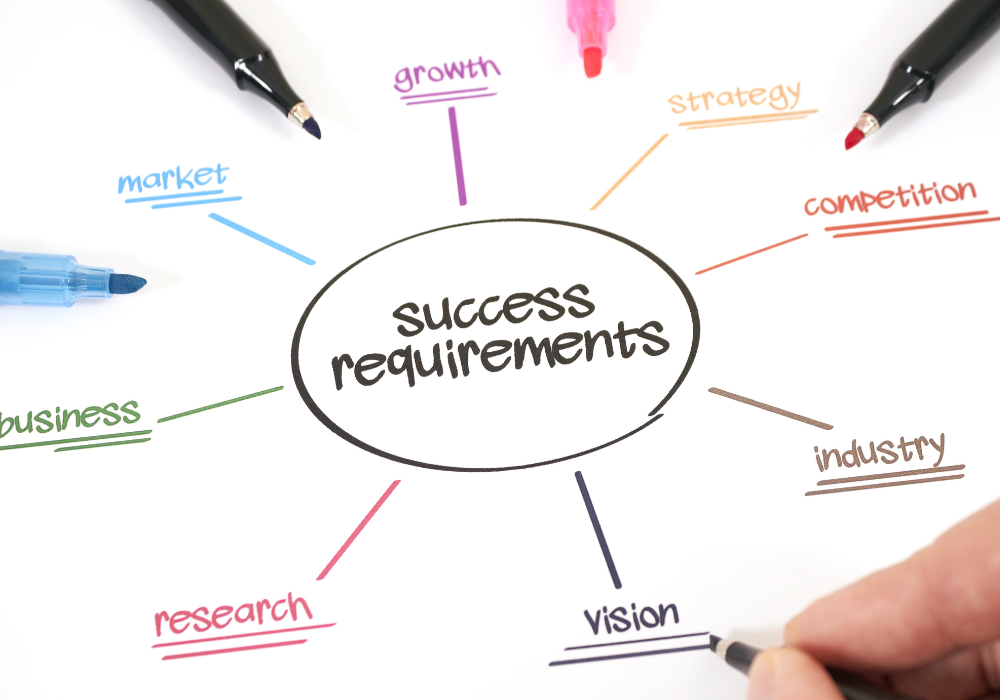Any business should have a content strategy, but when you’re an Enterprise level business, you need an enterprise content strategy, that takes into account the size, scale, and specific needs of your business.
When it comes to successful lead generation, content marketing remains the strategy that provides the highest return on investment (ROI). It creates about three times as many leads as other marketing methods at 62% less of the cost.
What Is an Enterprise Content Strategy?
An enterprise content strategy helps improve your marketing campaigns' results by providing relevant content to your target audience. It aims to develop content that answers a potential customer's questions or provides solutions to satisfy their needs.
It consists of four elements:
- Campaign Strategy
- Keyword Strategy
- Content Creation
- Content Measurement
Each element feeds into the other and the cyclical process allows you to continuously update your content strategy to achieve the best results.
Of course, this is true of a regular content strategy, but when we’re talking about Enterprise, we’re thinking in terms of larger, more diverse strategies. Enterprise-level businesses tend to have larger audiences, split across more personas, and a large number of different types of content that will be necessary.
Campaign Strategy
Your content marketing campaign strategy should focus on your current objectives. It is the short-term strategy that allows businesses to set goals that may include:
- Lead Generation
- Brand Awareness
- Social Sharing
- Audience Engagement
- Continuous Engagement
- Onboarding Clients
- Thought Leadership
- Brand Credibility/Equity
Each of your goals should be SMART (Specific, Measurable, Achievable, Relevant, and Timebound). This will allow you to set key performance indicators (KPIs).
Review your strategy quarterly to measure its results and adapt accordingly. You may decide to make changes, continue, or even start over. This will depend on if the campaign is helping you achieve your KPIs.
An Enterprise content strategy will likely include many or all of the strategies above, whereas a smaller strategy might include two or three of them.
Keyword Strategy
This is the more tactical part of your content strategy. Keywords will help you attract the right audience to your site.
Once you've selected your keywords, use them to lead visitors to the information or answer they're looking for by linking it to a relevant page on your site. Following these steps will make the process simpler:
- Choose general words that your audience is searching for online
- Narrow these down to about 20 more specific (or longtail) keywords by thinking about your competition and traffic
- Determine the search intent of each keyword and pair it with the appropriate site page
Using Google's Autofill, Keyword Planner, or Trends can help you generate appropriate keywords. You can also use HubSpot to research keywords.
In an Enterprise content strategy, you’re likely to be looking at large groups of different types of keywords, so keyword mapping will be extremely helpful – you should map keywords to buyer intent, persona, and stage of the buyer’s journey, as well as the specific pages and pieces of content you’ll be creating to attract that keyword traffic.
Mapping is helpful at any scale, but Enterprise businesses will benefit from the clarity it provides – especially as you’ll start to see any gaps where you don’t have content for particular personas at certain stages.
Content Creation
When creating the content relevant to the keywords you've chosen, focus on the following:
Keeping It Relevant - Content that's straightforward and to the point will help your reader find the answer to the question that led them to your site. Depending on the buyer intent or buying stage, this content might be simple or more complex. For example, a technical persona will be seeking more detail than a marketing persona. Make your content relevant to the intent, stage, and keywords you mapped.
Your Audience - Write to your target audience even if your content may exclude others. Especially when you have a higher number of personas, you need each piece of content to be targeted to one of them. Trying to write for everyone will appeal to no one, so you might need two or three similar topics to attract and engage your different audiences. Your keyword map should identify which keywords each persona is likely to be looking for, so you can tailor each item to them and their needs.
Being Specific - Walk in your readers' shoes and provide examples of situations they are likely to have experienced. It'll allow you to connect with your reader and help establish yourself as an authority on the topic. Again, you’ll want to do this for each persona.
Originality - Share your unique perspective and insights with your reader. Your goal is to move them through the buying journey, so the more engaging and interesting your content, the more of their attention you capture. Brand credibility is a key element of an Enterprise strategy, so build on your specific knowledge and insight.
Directing Readers - Using a clear Call-to-Action (CTA) will direct your reader to what their next step should be. These should be tied to the buyer journey stage each piece of content is designed to match – there’s no sense in directing someone in the Awareness stage straight to a “speak to our sales team” CTA, they’ll need more information about their issues. Create a web of content that leads each persona in each stage to the next stage, then direct them to the next logical step.
Content Measurement
You'll only know how effective your content is by measuring your results. At Enterprise-level, you’ll be focused on your leads generated, revenue attribution, and pipeline building, when it comes to your main level of reporting. These are the figures that affect the bottom line.
Revenue attribution helps identify where your content contributes to your sales. Keep a close eye on the types of content that appear in these reports, because you’ll want to learn from them and develop more content on these topics.
Measure which content generates the most leads, which creates deals, and which contributes to purchases. You’d expect to see content at the decision stage playing a larger part in generating revenue, but make sure you identify which content from earlier stages leads people through your sales process.
Standard content KPIs like traffic, links, views, time on page, and bounce rate are still relevant, but ultimately what matters is results.
Benefits of an Effective Enterprise Content Strategy
Any good content strategy should have a wide range of benefits – from reaching new customers, to increasing brand awareness.
Running a enterprise strategy involves a lot of work up front, to categorise your personas throughout the buying stages, map keywords across these personas and stages (as well as across search volumes) and plan out a content calendar that provides a range of content at the right times.
The benefit of this is that you have a roadmap to creating a huge range of content that draws people in, leads them through your sales cycle no matter their needs or stage, and connects with a wide range of customers.
All this work also makes it easier to segment your content – across all channels – to be targeted, direct, and relevant. You have the chance to create microsites or website sections, because you’re more targeted and the size of your market justifies it.
Implementing a Successful Enterprise Content Strategy
There are several things you can implement in your organisation to ensure your strategy is successful. Here are a few:
Content Marketing Team - This team can manage your brand guidelines and the content style and tone you'll use and ensure consistency in your messaging. They'll also be responsible for keeping up with content distribution technology and the latest developments in content creation, while generating the large volume of content that your strategy requires. Depending on the size of the team, you might want divisions that focus on a specific area, persona, or topic.
Organisation-Wide Involvement - Encourage content creation from all departments by implementing an employee content sharing program. This will provide different perspectives and ensure technical information is drafted by your technical teams. Detailed content guidelines will help to manage the content produced, and your Content Team should act as brand guardians, editing and tweaking content to ensure it meets your standards.
Marketing and Sales Collaboration - Ensure marketing and sales teams work together to develop your content. Marketing can create blogs that answer prospective customers' questions based on the sales team's interaction with customers. For example, we have a fortnightly “Smarketing” meeting, where the sales team share their ideas based on the comments and questions they get from prospects, and marketing provide insights into the content that gets the most engagement. Both teams are well informed, our prospects get the information they’re looking for, and our campaigns are collaborative and connected.








